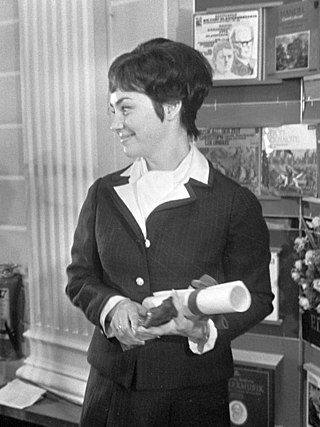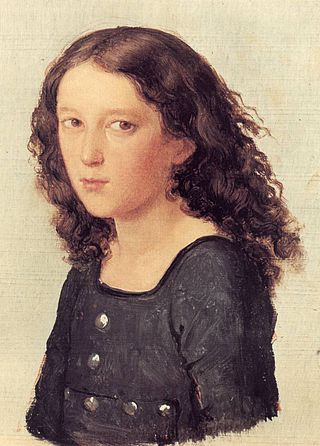The Berlin Philharmonic is a German orchestra based in Berlin. It is one of the most popular, acclaimed and well-respected orchestras in the world.

The Violin Concerto in D major, Op. 61, was written by Ludwig van Beethoven in 1806. Its first performance by Franz Clement was unsuccessful and for some decades the work languished in obscurity, until revived in 1844 by the then 12-year-old violinist Joseph Joachim with the orchestra of the London Philharmonic Society conducted by Felix Mendelssohn. Joachim would later claim it to be the "greatest" German violin concerto. Since then it has become one of the best-known and regularly performed violin concertos.

Sir Neville Marriner, was an English violinist and "one of the world's greatest conductors". Gramophone lists Marriner as one of the 50 greatest conductors and another compilation ranks Marriner #14 of the 18 "Greatest and Most Famous Conductors of All Time". He founded the Academy of St Martin in the Fields, and his partnership with them is the most recorded of any orchestra and conductor.
The Gramophone Classical Music Awards, launched in 1977, are one of the most significant honours bestowed on recordings in the classical record industry. They are often viewed as equivalent to or surpassing the American Grammy award, and referred to as the Oscars for classical music. They are widely regarded as the most influential and prestigious classical music awards in the world. According to Matthew Owen, national sales manager for Harmonia Mundi USA, "ultimately it is the classical award, especially worldwide."

Great Mass in C minor, K. 427/417a, is the common name of the musical setting of the mass by Wolfgang Amadeus Mozart, which is considered one of his greatest works. He composed it in Vienna in 1782 and 1783, after his marriage, when he moved to Vienna from Salzburg. The large-scale work, a missa solemnis, is scored for two soprano soloists, a tenor and a bass, double chorus and large orchestra. It remained unfinished, missing large portions of the Credo and the complete Agnus Dei.

Mendelssohn's Piano Concerto No. 1 in G minor, Op. 25, was written in 1830–31, around the same time as his fourth symphony ("Italian"), and premiered in Munich on 17 October 1831. This concerto was composed in Rome during a travel in Italy after the composer met the pianist Delphine von Schauroth in Munich. The concerto was dedicated to her. Mendelssohn attended one party after another in Munich in October 1831, the month of the premiere, but he also played chamber music and taught double counterpoint. He performed the piece himself at the premiere, which also included performances of his Symphony No. 1 and the Overture from Midsummer Night's Dream. He had already written a piano concerto in A minor with string accompaniment (1822) and two concertos with two pianos (1823–24).
Margaret Anne Marshall OBE is a Scottish soprano.
Anthony Halstead is a leading figure in the period-instruments movement. First known as a virtuoso on the natural horn, he has gradually moved into the role of conductor and has directed the Academy of Ancient Music, the Orchestra of the Age of Enlightenment, and most notably Hanover Band.
The Piano Concerto No. 2 in G major, Sz. 95, BB 101 of Béla Bartók is a musical composition for piano and orchestra. The work, which was composed between 1930 and 1931, is notorious for being one of the most difficult pieces in the repertoire.

Edith Mathis is a Swiss soprano and a leading exponent of the works of Wolfgang Amadeus Mozart worldwide. She is known for parts in Mozart operas, but also took part in premieres of operas such as Henze's Der junge Lord.

Wolfgang Amadeus Mozart's Horn Concerto No. 2 in E-flat major, K. 417 was completed in 1783.

Wolfgang Amadeus Mozart's Horn Concerto No. 3 in E-flat major, K. 447, was completed between 1784 and 1787, during the Vienna Period.

José Francisco Araiza Andrade, is a Mexican operatic tenor and lied singer who has sung as soloist in leading concert halls and in leading tenor operatic roles in the major opera houses of Europe and North America during the course of a lengthy career. Born in Mexico City, he studied singing at the Conservatorio Nacional de Música de México and later in Germany, with Mozartian tenor Richard Holm, and lieder interpretation with Erik Werba. He made his operatic debut in 1970 in Mexico City as First Prisoner in Beethoven's Fidelio. Araiza initially came to international prominence singing in Mozart and Rossini operas, but in the 1980s broadened his repertoire to include Italian and French lyric tenor roles and Wagnerian roles such as Lohengrin and Walther von Stolzing. He was made a Kammersänger of the Vienna State Opera in 1988. Now retired from the opera stage, he teaches singing and serves on the juries of several international singing competitions.

The Concerto for Violin and String Orchestra in D minor was composed by Felix Mendelssohn at the age of thirteen. It has three movements, Allegro–Andante–Allegro, and performance duration is approximately 22 minutes.

Christoph Koncz is an Austrian-Hungarian classical musician. He performs internationally as a conductor, violin soloist, chamber musician and principal violinist of the Vienna Philharmonic. At the age of just nine, he received worldwide acclaim for starring as child prodigy Kaspar Weiss in the Canadian feature film The Red Violin, which won the 1999 Academy Award for Best Original Score.

Leopold Mozart's Trumpet Concerto in D major was completed in 1762, and is now "popular with trumpeters." The work is in two movements:
- Largo
- Allegro moderato
Ancient Airs and Dances is a set of three orchestral suites by Italian composer Ottorino Respighi, freely transcribed from original pieces for lute. In addition to being a renowned composer and conductor, Respighi was also a notable musicologist. His interest in Italian music of the 16th, 17th, and 18th centuries led him to compose works inspired by the music of these periods.
Leonard Hokanson was an American pianist who achieved prominence in Europe as a soloist and chamber musician.
Hai-Kyung Suh is a South Korean classical pianist living in New York. She is known for her rich, round tone, and singing voice-like phrasing, characteristics of the Romantic style of piano playing that was predominant in the Golden Age of pianism.










